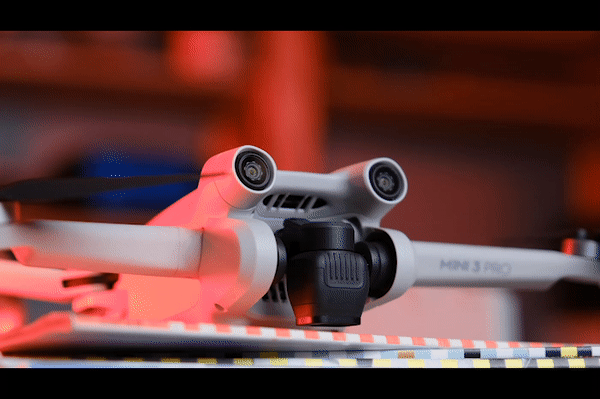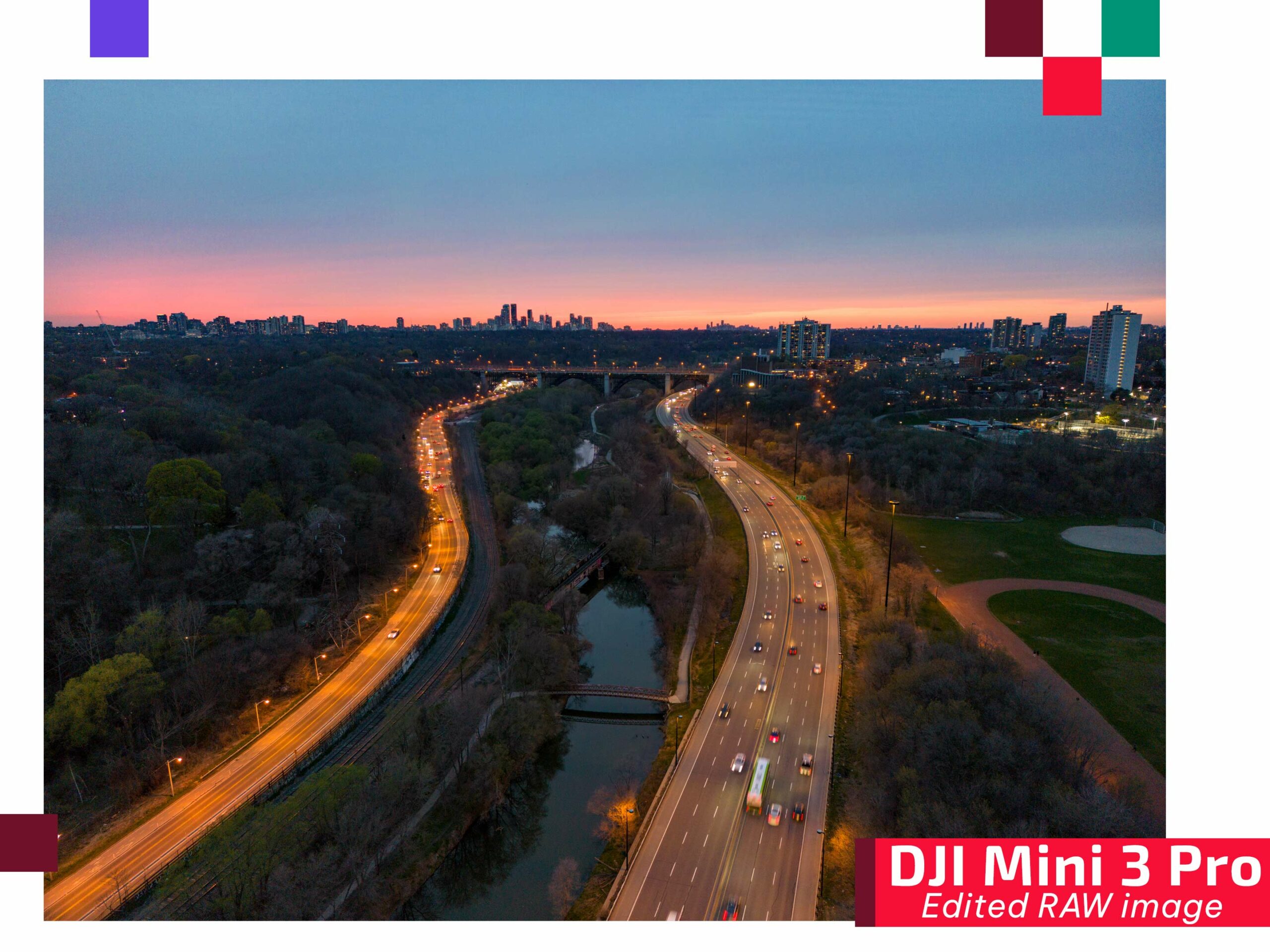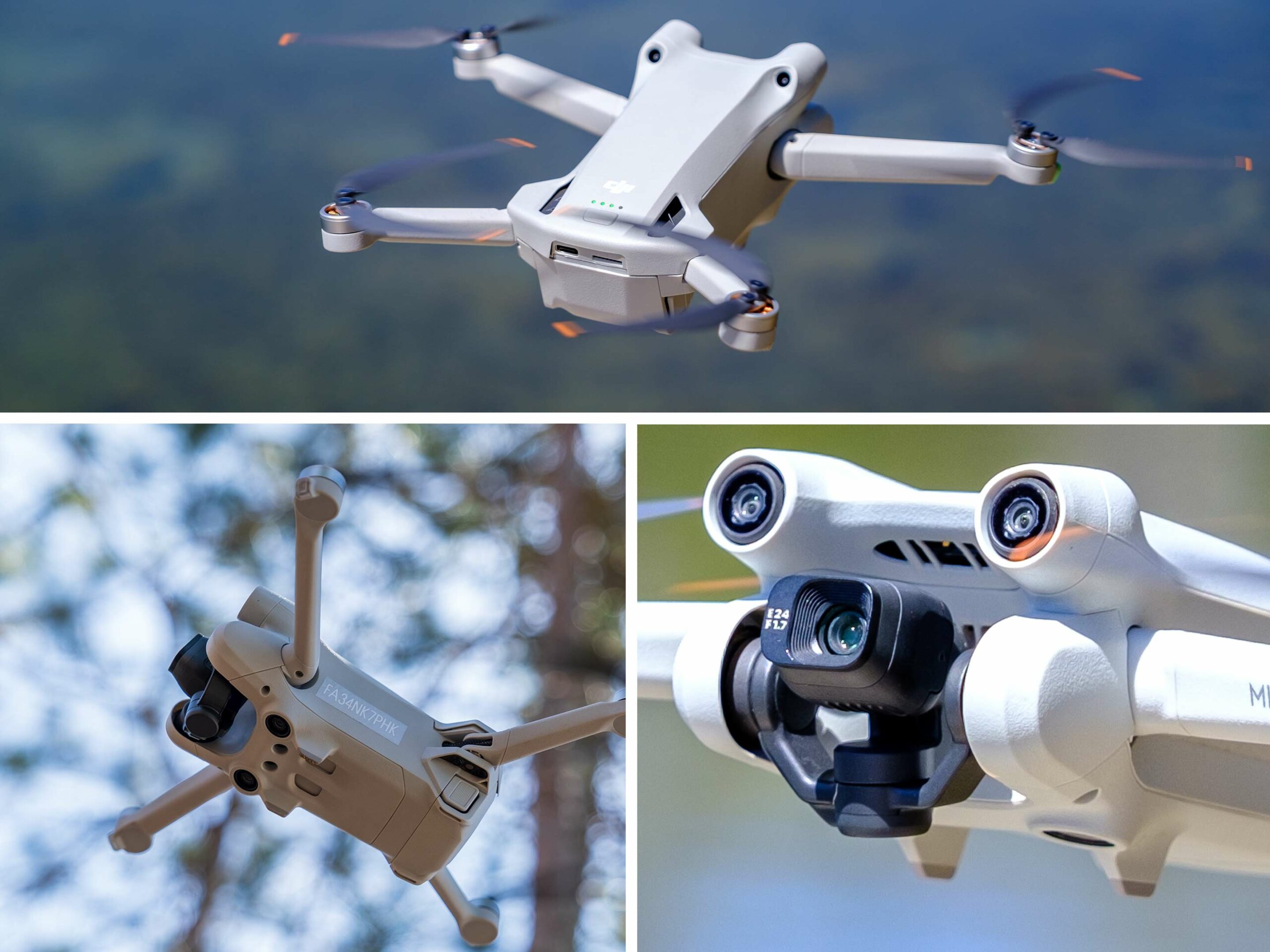Before you buy a drone, you need to ask yourself what you plan to do with it. Are you shooting movies? Youtube videos? Maybe you are taking TikToks? Are you using it just to have fun and capture some memories?
Surprisingly, the new DJI Mini 3 Pro works for most of those purposes better than you might imagine. Sure, it won’t be used in Hollywood blockbusters, but if you want to see a device that looks and feels like a toy above its weight class, read on.
The DJI Mini 3 Pro introduces a beast of a camera. The images specifically surprised me with how well it performs in low light due to a new dual ISO. In my experience, the Mini 3 Pro is the best all-around drone I’ve ever used, packing a lot into its highly desirable sub-250 gram frame. This weight limit is important as it means the drone can be flown without a license in Canada and the US.
What’s new and why it matters
There are several updates coming to the DJI Mini 3 Pro this year, so it’s hard to know where to start, but for me, the best new features are the camera updates.
DJI has slightly increased the sensor size this year to 1/1.3 of an inch. This means you can get 2.4μm pixel size, which captures more light than previous Mini drone. Combine this with a new f/1.7 aperture on the lens and new HDR processing, and you’ve got stunning low-light images. The drone gets a bit noisy in low light, but it is manageable and makes the DJI Mini 3 Pro much more powerful than the Mini 2.
When the sensor isn’t pixel-binned, you can also take great-looking RAW images with the full 48-megapixel sensor. I’m used to smaller drones like the Mini 3 that take pictures similar to a smartphone camera’s quality, but DJI’s latest offering actually outperforms many smartphones. The sharpness and clarity is amazing. My only complaint is that it’s disappointing that you can’t focus on objects that are close to the camera.
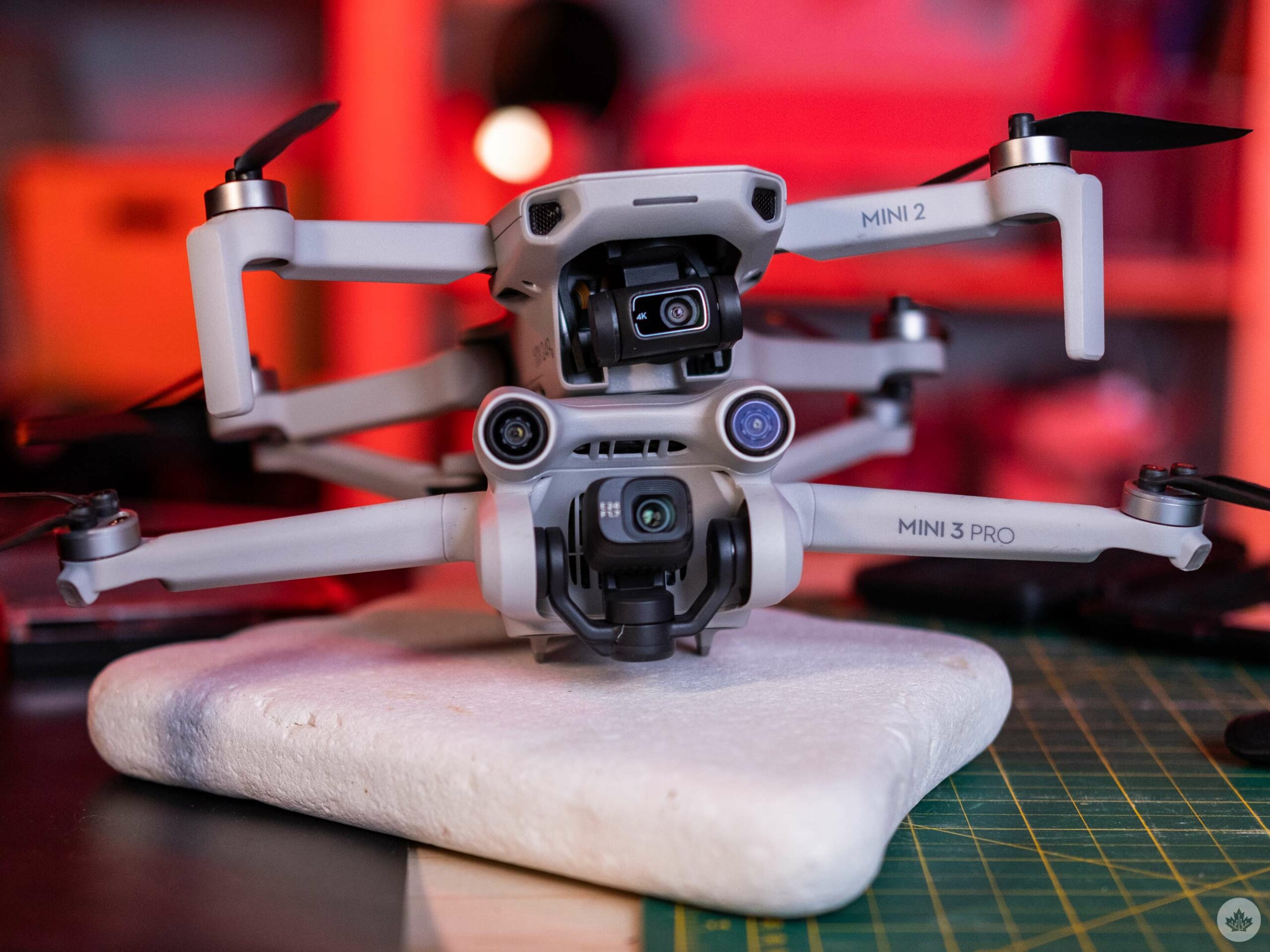
The wingspan of the Mini 3 Pro is even wider than the Mini 2. The propellers are also slightly longer.
The extra processing power that unlocks improved low-light performance also lets you shoot 4K footage at 60fps, so you get great slow-motion panning across the sky. However, you need to make sure you have a fast enough microSD card that supports it. That feature was never available to me during my review unit, so most of the video I shot for the video review was 4K 30fps on Auto, as I didn’t get a chance to test the ND filters either. Still, it turned out pretty good.
I will also mention that DJI added a new color profile similar to D-Cine that is set for grading, which is another advantage that makes this drone more accessible to creators who want to capture a wider range of colors.
There is another important camera setting available here: vertical video. DJI has redesigned the drone’s gimbal so that it can flip the entire camera array sideways, allowing creators to film the nativity in a vertical orientation. If you do a lot of vertical video, this makes the DJI Mini 3 Pro the best drone you can get for that.
Some of the more exciting, single-creator focused modes like ‘Active Track’, ‘Master Shots’ and ‘Quick Shots’ are disabled in the vertical shooting orientation. This is annoying and something I hope DJI fixes soon. You can always crop horizontal images, but this is an extra step that shouldn’t be necessary when the drone can shoot vertically so easily.
When shooting horizontally, these features work very well. During my tests, the Active Track mode responded expertly while walking. He was able to follow me through trees, through crowds of people, and over a bridge. The experience felt pretty incredible. I even cropped this footage for a vertical video, and it held up well enough.
The final new feature is a design that incorporates tracking sensors. DJI says the enlarged wingspan, longer propellers, and smoother body shape help the small drone stay more stable in the sky. In my tests, the DJI Mini 3 Pro was still pushed more than the larger Mavic 3, but it was stable enough.
However, the sensors unlock great potential as they can track people, cars and pets, to follow them like a little dash cam for your life. It’s amazing when it works, but since there are only sensors on the front and bottom, you have to be careful to make sure the drone doesn’t go sideways into things.
Overall, the Mini 3 Pro takes nearly all the desirable features of the DJI Air series of drones and packs them into a sub-250g body, which means it can be flown without a drone license and is pocketable. This instantly makes the DJI Mini 3 Pro the most convenient on the market, which means a lot when using a drone as it takes a lot of practice and setup to get right.
A sharper eye in the sky
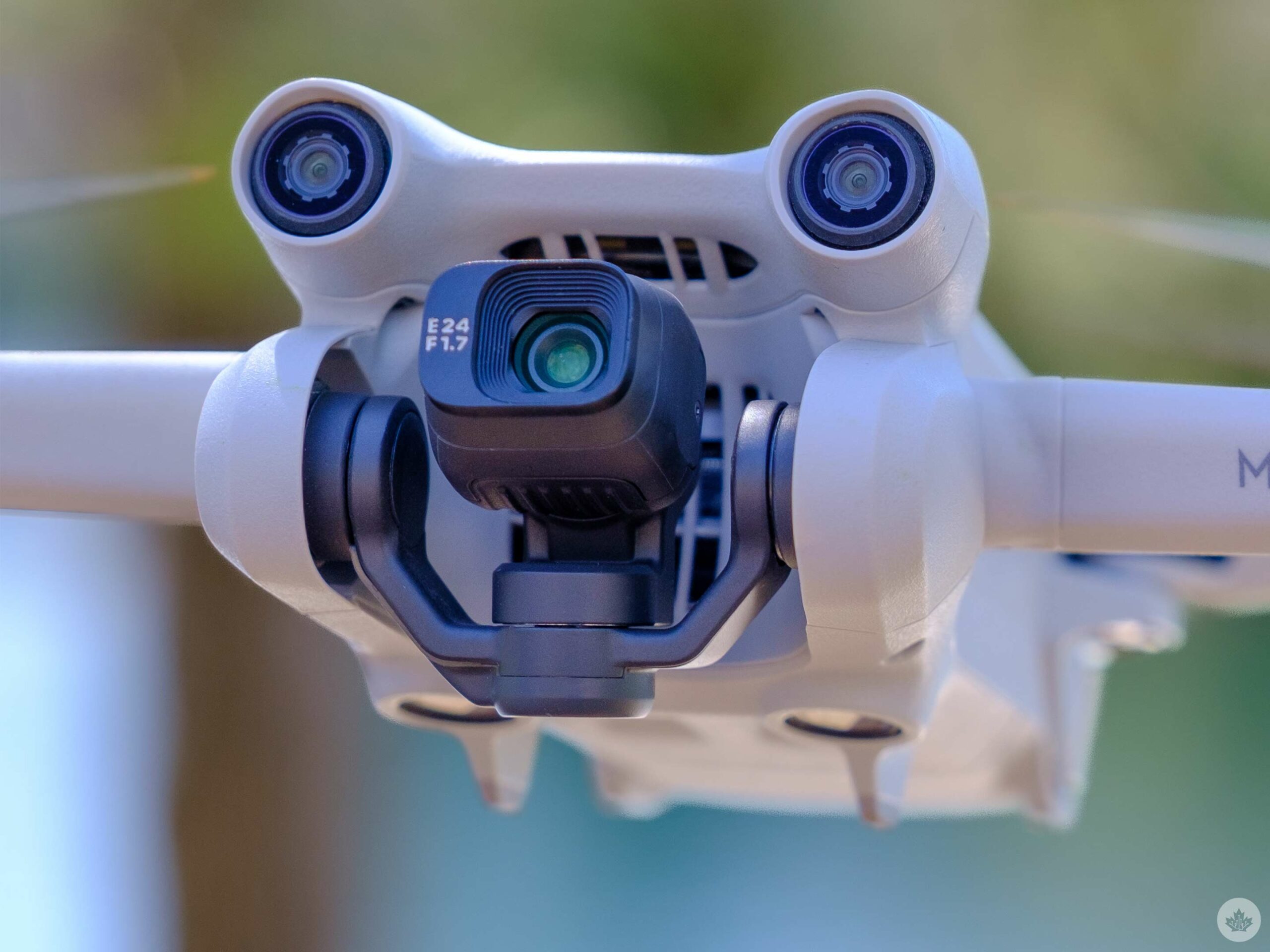
The front area of the ‘sunshield’ twists off so pilots can install small ND filters.
Right off the bat you can notice a small increase in still image quality compared to the Mini 2. This doesn’t sound exciting, but the Mini 2 was already really decent, so the extra sharpness the Mini 3 Pro adds to the equation makes the images burst. In low light situations the game changes and the Mini 3 Pro performed much better with less noise and impressive dynamic range.
If you really want to print some photos, the Mini 3 Pro is probably the best option, and for anyone who wants to take pictures or film sunsets (I think all drone owners), the new drone is a clear step forward. Colors on the Mini 3 Pro are also a bit richer straight from the camera if you like to shoot JPEGs.
Video is a bit of a different story. I’m sure for many people the simple addition of 4K 60fps slow motion will be enough to make them salivate over this cute little drone, but there’s a lot more to it than that. The simple fact that this drone can shoot in HDR helps its images look much cleaner, and the dual native ISO helps control noise in the image.
Obviously, the higher and further away from the subject, the better the image looks, as details are naturally blurred. But even from moderately close distances, the drone’s images are sharp and detailed.
There’s a 2x digital zoom that’s there too, it’s considerably less sharp and noisier than the main lens, but to be honest I think with a little help in editing you can still get good shots with it. The subtle parallax it adds to your frames and the compression you get from the 48mm equivalent focal length is something most flying videographers shouldn’t sleep on.
Like I said earlier, this won’t appear in any Hollywood blockbusters, but for anyone more interested in drones, this is the model for you. As much as I loved the power of the Mavic 3 when I tried it out, the sheer size made it quite awkward to use and carry around. The Mini 3 Pro doesn’t have that problem, and its footage is still more than enough for my use cases, making YouTube videos and casual photography.
A new driver and more
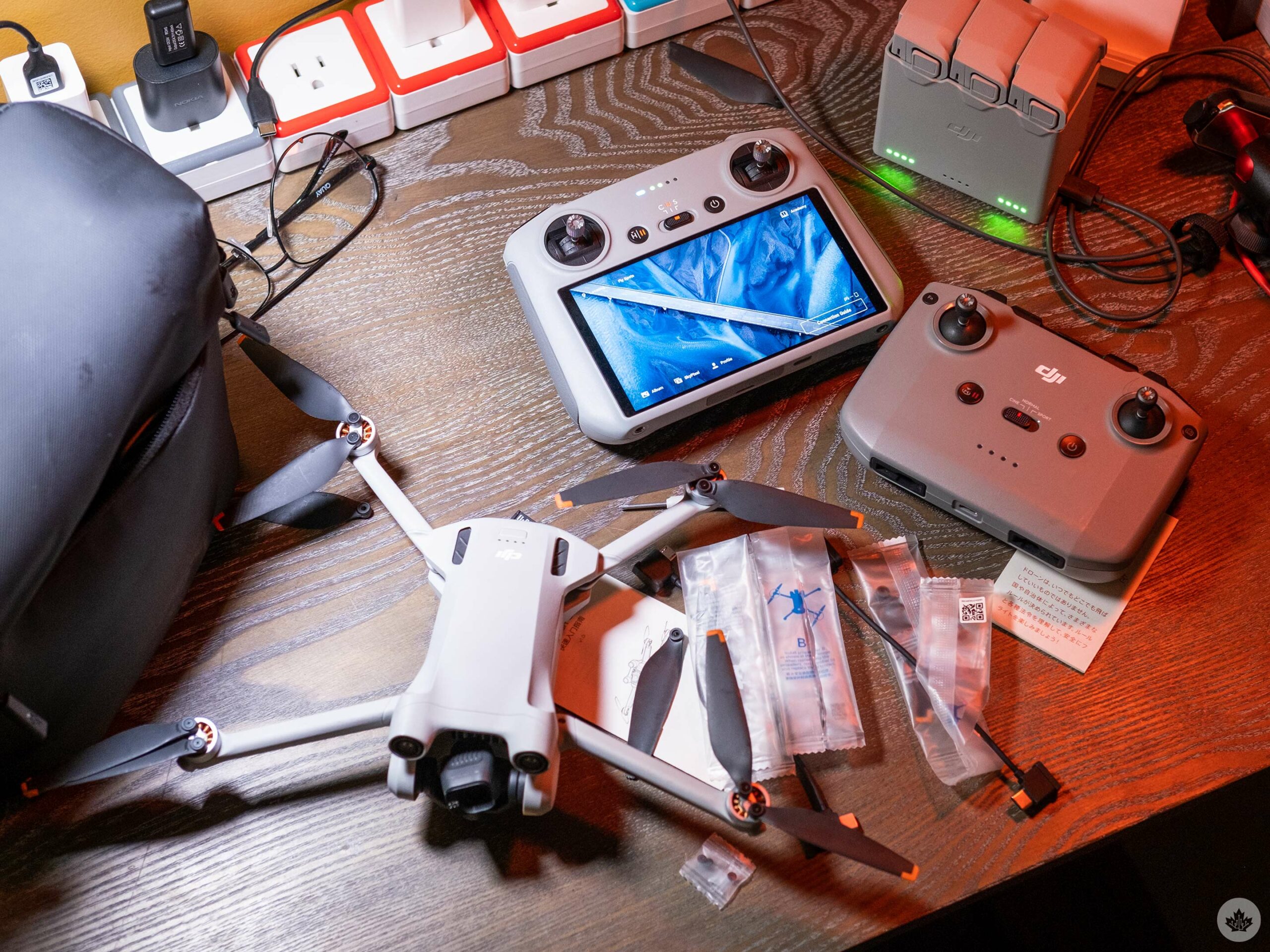
Most of the DJI Fly More Kit Plus equipment.
Notably, this is the first Mini DJI drone to come without a controller at its base cost ($869 CAD). If you’re upgrading from a Mini 2 or Air 2S, you’ll probably be fine, but most people will probably want to pay for one of the more expensive packages that come with a controller.
There are two. The first is the ‘DJI RC-N1’ that comes with most modern DJI drones. It’s the same controller that came with the DJI Mini 2 and the base model Mavic 3. This controller feels good in the hand, has a robust battery, and needs to be connected to a phone to work. This new drone plus basic controller option is priced at $979 CAD.
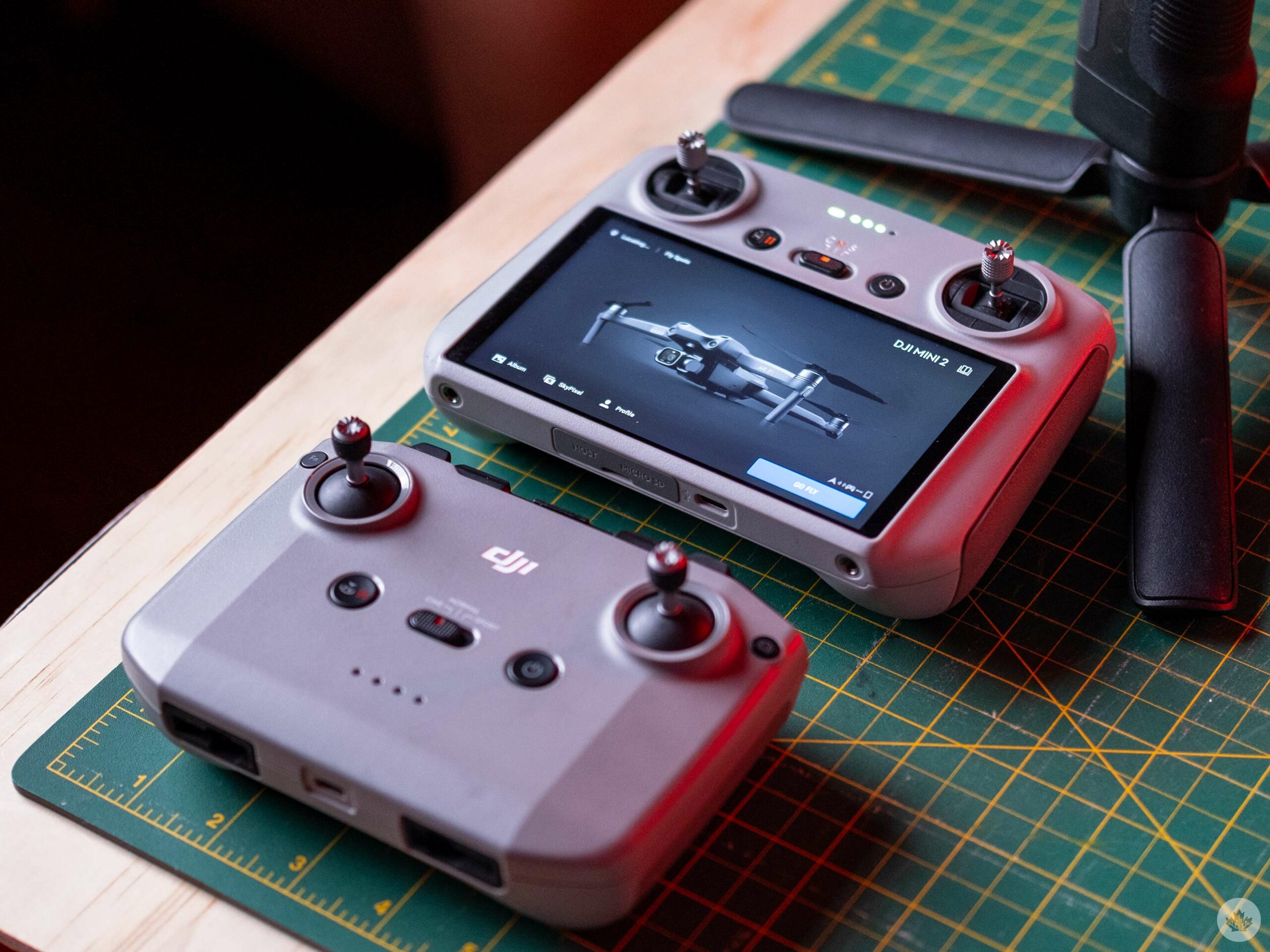
The best controller is the new DJI RC. The bottom controller is the DJI RC-N1 and has been the standard controller for a few years.
The new controller is called the ‘DJI RC’ and has a built-in 700-nit screen so you can keep your phone free for other tasks. This new controller even has a MicroSD card slot so you can back up your footage or view the drone’s card on the go. There are also two USB-C ports at the bottom; you can use one for charging and the other is for a China exclusive accessory.
So far, I like the new controller, but it’s less about its new features and just because it conveniently keeps my phone free, which is a nice bonus. That said, 700 nits isn’t as bright as some phones, and in direct sunlight I found it hard to see the screen.
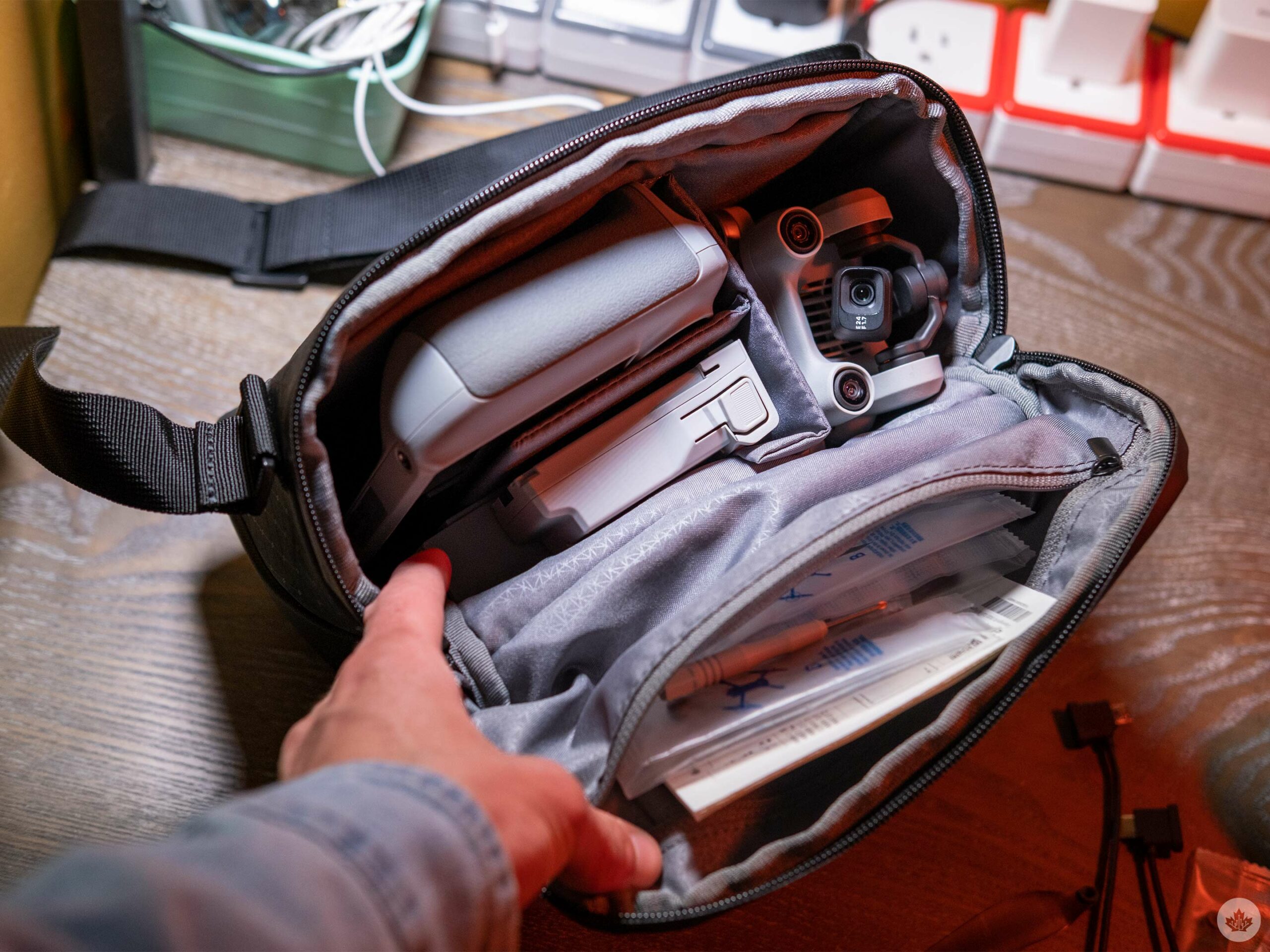
As usual, the DJI ‘Fly More’ packs are a nice touch with a fun little bag, two extra batteries, a neat charger and plenty of extra propeller blades.
Like many other DJI drones, the Mini 3 Pro can take ‘MasterShots’ and ‘QuickShots’. Here are some preset flight paths that you can make the drone follow around a location or person. Basically, you just tell the drone what you want it to film and it will do so as long as that thing doesn’t move. If it’s moving, you need to use tracking.
QuickShots are individual movements, such as panning around a subject or zooming in/out. MasterShots takes this to the extreme by connecting a bunch of QucikShots into one long shot and then splicing it all together for you. Both are pretty useful, but I found myself using QuickShots more than MasterShots because I usually just needed an angle of one thing, not an epic edit of a bunch of shots. Still, both modes are fun, and I’m sure people will continue to get a lot of use out of both. These features, along with the ability to take pans and hyperlapses, are also found in other DJI drones.
The tracking features are what surprised me the most with the Mini 3 Pro. Having a drone smart enough to follow you while you walk, bike, or drive without someone else actively controlling it is a huge plus. Seriously, whether you’re part of a small team of filmmakers or a solo creator, the usefulness of this feature can’t be understated. Part of the reason I haven’t been able to add drone shots to most of my recent MobileSyrup videos is that they take a lot of time, skill, practice, and a pilot to film me with, making cars and people on the move so virtually impossible to catch. With the new track feature active, all of that is gone.
The last thing I’ll mention here is the battery life of the DJI 3 Pro. Overall, 34 minutes of flight in ideal conditions seemed like enough for me (it’s closer to 25 in some wind). That said, if you want extra flight time, DJI also sells a battery called the Intelligent Flight Battery Plus that can boost flight time to around 47 minutes, but there’s a catch. This battery lifts the weight of the drone slightly above 249 grams, which means that when you use it, you technically need a drone license.
Reference-mobilesyrup.com
